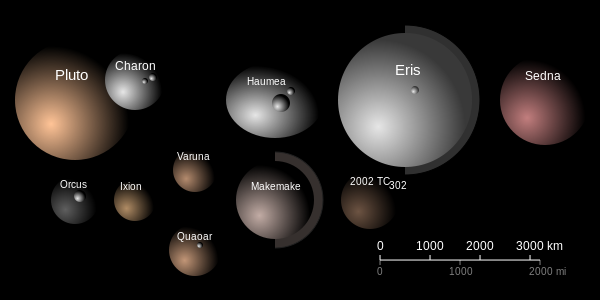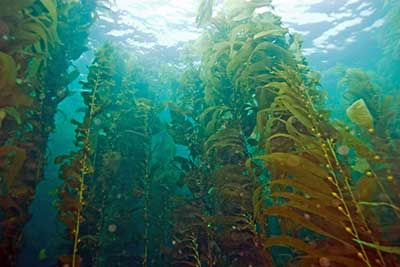Physicist: We can feel fairly certain that no life from Earth can survive on the surface of any of the other planets.
Mercury is really inhospitable. Although there’s some water ice in craters near it poles, there’s very little hope of any liquid water anywhere.
Venus may be capable of sustaining high-altitude microbes (where it’s relatively cool), but nothing can survive being anywhere close to the surface (including robots, the sturdiest of which have lasted for about 2 hours). That said, even the high-atmosphere life here on Earth is still dependent on the biosphere below.
Earth is alright. Could be better.
If there’s liquid water deep under the surface of Mars there are a few extremophiles that may be able to survive there.
Given the extreme cold, or pressure, or toxic gases of all of the gas giants, it’s very unlikely that anything could survive on/in them. Jupiter, Saturn, Uranus, and Neptune all suffer from the same affliction: no ground. It may be possible to engineer some kind of amazingly hardy space-kelp, that uses bladders filled with harvested hydrogen to float in the warmer layers of the gas giants, and somehow gleans energy from the almost completely chemically inert atmospheres and the very un-Sunny darkness.
Unfortunately, space-kelp doesn’t exist (yet).
The dwarf planets are a dry well as far as survivability goes. They’re too small to hold an atmosphere or have warm cores (as far as we know). So, Ceres, Pluto, Sedna, Xena (and its moon Gabriel), and all the rest would be great places to mummify creatures in a hurry, but not much else.

Some of the dwarf planets. Most of these are far to small and distant for us to have decent images, but in 2015 New Horizons will give us some detailed images of Pluto and Charon!
So the other planets and dwarf planets are a bust. However, there are moons aplenty in the solar system. Titan has an atmosphere even denser than ours (this is freaking researchers right-the-heck-out today), and many other moons have active, hot cores. There may be some bacteria that could live in the methane-rich environment of Titan, assuming they could find a place warm enough under the surface to find some liquid water (the surface of Titan is almost cold enough for liquid nitrogen to condense out of its atmosphere), but they wouldn’t exactly thrive.
Another hope is Europa, an big ball of ice that may have liquid water oceans beneath its frozen surface. As far as I know, this is the only place that anyone is expecting to find life that might be even remotely familiar to us. Assuming it does have volcanically heated water, Europa may also be the only place with even the slightest possibility of multi-cellular life.
That said, it probably doesn’t. It’s fairly likely that living things from Earth have been blasted into space (by impacts) and have eventually landed on almost every major body in the solar system. While it’s possible to survive the trip, living and growing on another planet is likely to be impossible.









Engineering some kind of gas giant space kelp sounds like a fascinating idea. I’m not entirely sure why you’d want to do so but I’m sure it would be very interesting to work out how to do it.
According to this Wikipedia article, there are 13 Solar System bodies that could harbor oceans beneath their surfaces—Europa, Ganymede, Callisto, Titan, Enceladus, Rhea, Titania, Oberon, Triton, Pluto, Eris, Sedna, and Orcus—so black smoker ecosystems might be the rule, not the exception.
http://en.wikipedia.org/wiki/Extraterrestrial_liquid_water
Even if we find a candidate planet, it also must have a magnetic field to protect its surface from Sun’s (and/or other stars) radioactive gamma rays.
Ozgur if you go deep enough into the planet you won’t be affected by the gamma rays.
There is an extremophile known as the “Tardigrade” or “Water bear”. NASA keeps sending them into the vacuum of space and observing them. They can survive in nearly any conditions for 10 years at the most.
Very interesting, I am fascinated by the quest for life in the Solar System and in the Universe. I hope we’ll discover others forms of life.
However, there is an error in the list of dwarf planets. The planet named “Xena” in the article is called Eris and its moon Dysnomia now. You can check here : https://en.wikipedia.org/wiki/Eris_%28dwarf_planet%29#Name
🙂
”There is an extremophile known as the “Tardigrade” or “Water bear”. NASA keeps sending them into the vacuum of space and observing them. They can survive in nearly any conditions for 10 years at the most.”
Liam , It is true that tardigrades can survive in extreme conditions by being dormant for some time (years), but they will remain dormant until external conditions are favorable (ie : lots of moisture and plant life and such)
So they won’t reproduce and establish a colony in these conditions.
Its debatable whether they truly are extemophiles.
Actually, Archeata microbes, alleged to be the most common life form on Earth, have been found digesting ammonia in anaerobic, nearly anhydrous deep sea sediments to all depths thus far drilled. The subsea subsurface conditions of temperature, pressure and chemistry are surprisingly similar to conditions encountered by the Galileo probe dropped into Jupiter’s atmosphere. While Jupiter may not have a “surface” per se, ammonium hydrogen sulfide may form solids floating in the dense atmosphere at depths of perhaps 150 km below the cloud tops. These solids may form crystals, sand, stones, islands, even “continents” floating along in the atmosphere of dense hydrogen. There is some evidence for solid objects at depth in the Jovian atmosphere: Von Karmann interference patterns in the cloud surface indicate that fluid flow patterns of the atmosphere are being disrupted at depth. This interference suggests that solids are present in the atmosphere, though not forming a continuous solid surface present on rocky planets. A distinct possibility is that the Galileo probe terminated transmissions when it crashed into a solid object. Not only is life on Jupiter possible, Jupiter is a reasonably possible source for life on Earth and other planets and moons of the solar system since the most numerous and highest total mass lifeform on Earth, a primitive predecessor to other lifeforms, appears to be able to survive and reproduce in conditions similar to those at depth in the Jovian atmosphere.
I’m not sure Ichthyologist is completely familiar with the experiments they’ve done with tardigrades. They were able to not only survive, but (temporarily) thrive in the vacuum of space. To the point of reproducing.
The author of the article appears to be almost completely be ignoring tardigrades completely; the only multicellular organism they appear to be considering are arthropods. It IS possible for tardigrades to survive on a few of these planetary bodies. This is in terms of temperature, pressure, radiation (which barely seems to affect them at all), and even atmospheric composition. They would likely only need trace amounts of water to survive.
Take Titan, for example. They could likely survive days, if not weeks in this environment. They could breed, and presuming you selected one of the species that practiced cannibalism, it’s theoretically possible for some of the offspring to eat others of its kind, breed, and adapt to living there permanently via natural selection. Not very likely, but still theoretically possible. Water is the main problem, as it’s in trace amounts, and the vapor is quickly taken up into the atmosphere.
There’s probably even other bodies that are slightly more hospitable to tardigrade life. I admittedly haven’t looked into any besides Titan for this example. But it IS theoretically possible to establish a tardigrade colony, even if it is a VERY remote possibility.